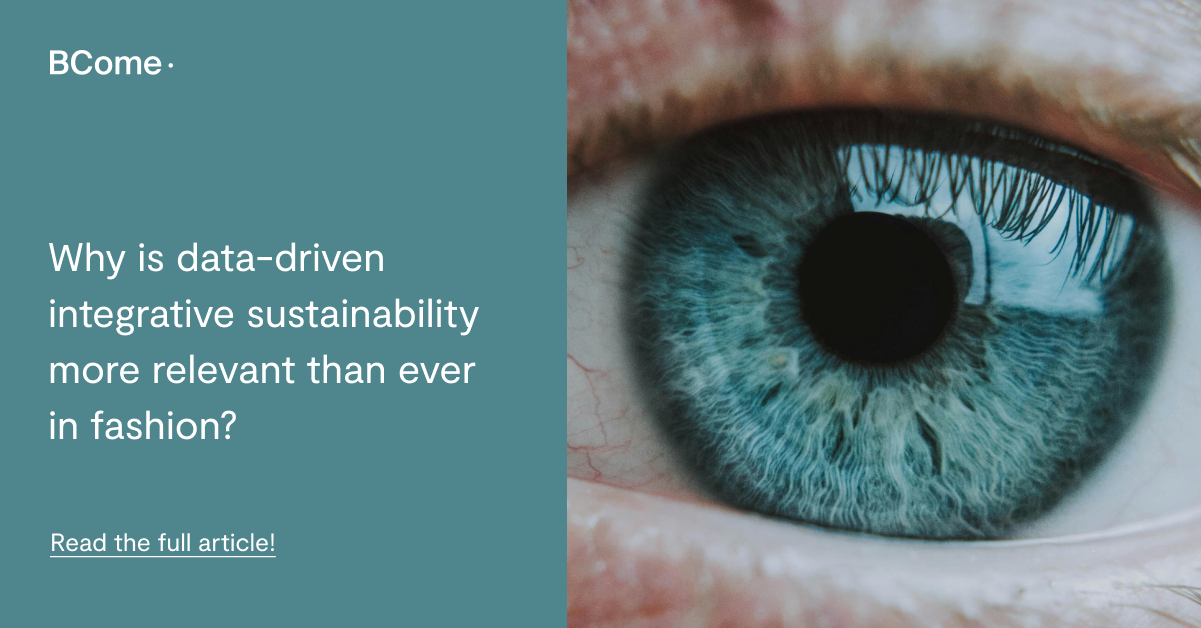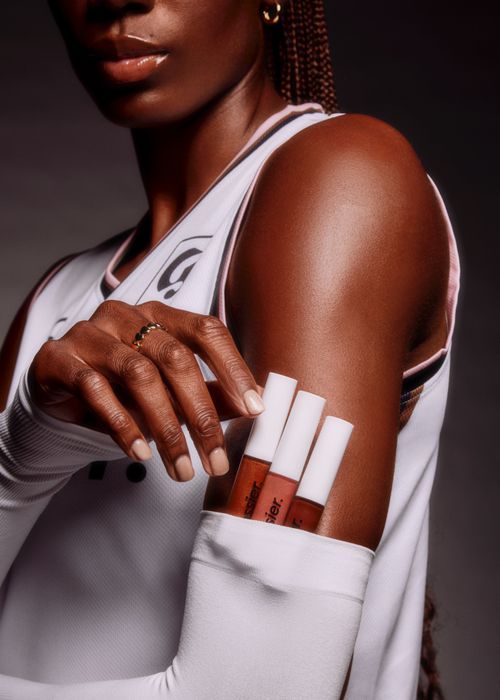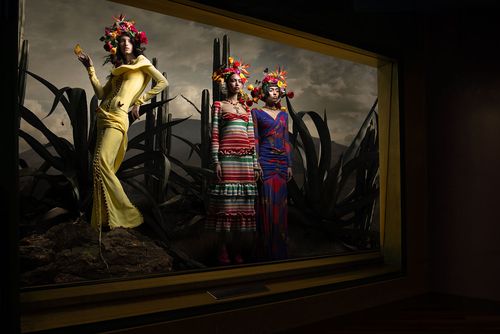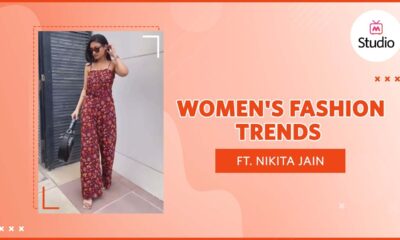Fashion
Why is data-driven integrative sustainability more relevant than ever in fashion?

When we talk about sustainability, it’s obvious that data plays a crucial role. The European Union has made it clear that, to avoid greenwashing, transparency must be data-driven to support sustainability claims. However, it’s worth asking what data is relevant to demonstrate genuine sustainable development. Are fashion brands taking concrete actions beyond showcasing their environmental commitment? In today’s article, we explain why data-driven integrative sustainability is more relevant than ever in the fashion industry.
The only way to report progress is through measurement, to understand where we stand and how we are progressing towards our goals
Transparency begins with data: what cannot be measured, does not exist. The only way to report progress is through measurement, to understand where we stand and how we are progressing towards our established goals. Although fashion and impact assessment are increasingly linked, thanks to legislative demands and a more aware public, many brands ignore the need to go beyond measuring only environmental impact.
When we talk about integrative, comprehensive or holistic sustainability, we are emphasizing the need to understand it in all its aspects: environmental, social, and economic, and above all, as a process of transformation towards a new development model that promotes the durability of a system encompassing both human and natural elements, which interact constantly.
If we read the sustainability reports of the most popular fashion brands in the market, we will continuously find terms such as “water consumption” or “carbon footprint measurement”. These companies focus on assessing their environmental impact, which is crucial, but they don’t provide a comprehensive view of their impact.
At BCome, we advocate for an integrative vision of sustainability that goes beyond the environmental dimension. We also consider the social, circular, and economic aspects of products. We believe in the interdependence of all these areas within a system and understand that neglecting one of them negatively affects the others, thereby hindering the achievement of true sustainability.
What essential data is required to adopt an integrative approach to sustainability?
Neglecting one aspect of your business while focusing on another is detrimental in the long run. Sustainability should be a philosophy deeply ingrained in the company, integrated across its DNA, and reflected in every operational aspect. Otherwise, you’ll only be applying temporary solutions that will eventually affect other areas of your business. These are the reasons why integrative sustainability is crucial to ensure the authentic progress of your fashion company:
Traceability is the beginning of everything. Starting by disclosing the country of origin of all raw materials used in the final product, as well as the location of the different processes it has undergone, facilitates the collection of crucial information about the product’s life cycle and, therefore, enhances the calculation of its impact.
Through its own PLM system, BCome provides key metrics to shed light on the supply chain of your fashion business. Here are some of the data points you’ll have at your disposal:
- Traceability score for each product.
- Comprehensive information on the materials used.
- Volume of suppliers involved at each stage of the chain.
- Associated certificates and best practices.
The environmental impact of fashion must be quantified. For a fashion company, measuring environmental impact should transcend simple carbon emissions. Comprehensive quantification of such impact involves evaluating a variety of indicators reflecting the complex interaction between the company and the planet.
Having specialized tools like BCome’s Life Cycle Assessment provides an effective way to measure and monitor key environmental impact indicators such as:
- Water scarcity. This indicator is essential for evaluating farming and livestock systems, such as those involved in the production of natural fibers, bio-based plastics, and leather.
- Global warming. Fashion companies’ involvement in reducing their GHG emissions is necessary to limit global warming to less than 1.5°C.
- Eutrophication. This is a key indicator for evaluating agricultural systems, wet textile processing, and coal combustion for electricity production.
- Abiotic depletion. Essential for highlighting the negative impact of synthetic fibers on the environment during raw material extraction and high-energy consumption processes in terms of fossil fuels.
Sustainability and social responsibility are closely linked. Social impacts are not easy to evaluate because, except for average salaries, their measurement tends to be qualitative. However, every company should be aware of its impacts on human rights, health and safety, working conditions, and animal welfare.
The development of BCome’s Social Life Cycle Assessment methodology allows for the evaluation of social impact indicators for different stakeholder groups:
- Social impact indicators related to workers:
- Child labor
- Gender wage gap
- Women in the workforce
- Fair wages
- Forced labor
- Trade unionism
- Safety measures
- Social security expenses
- Weekly working hours
- Social impact indicators related to local communities:
- Biomass consumption
- Unemployment
- Drinking water coverage
- Pollution
Without circularity, we cannot speak of sustainability. Analyzing the circularity of products is an essential step in addressing the issue generated by the linear production model, which is based on creating, consuming, and discarding. Adopting a comprehensive life cycle approach during design, development, and production, as well as identifying areas to reduce waste and determining how to recycle or reuse, is fundamental for fashion companies to minimize their impact.
BCome’s Circular Economy Indicators (CEI) methodology focuses on the circular aspects of products. Based on the Material Circularity Indicator (MCI) methodology from the Ellen MacArthur Foundation, we analyze the restoration of material flows and calculate a wide variety of indicators, including the following:
- Material Circularity Indicator (MCI)
- Recycled content
- Total unrecoverable waste
- Usage potential
Why your business should opt for an integrative approach to sustainability
If you still need more arguments, here are five key benefits that this integrative approach to sustainability can offer to your fashion business:
- Increase your company’s transparency. Adopting an integrative approach to sustainability will allow you to provide accurate and verifiable information about your performance in environmental, social, and economic terms, thus avoiding greenwashing and strengthening trust with your consumers.
- Optimize your supply chain. By understanding all aspects of sustainability, from the traceability of raw materials to the social impact of production, you can identify areas for improvement in your supply chain and work collaboratively with suppliers to implement more sustainable practices.
- Reduce your environmental impact. Quantifying and thoroughly evaluating the company’s environmental impact, beyond simple carbon emissions, allows you to identify opportunities to reduce natural resource consumption, minimize waste generation, and mitigate negative effects on the environment.
- Improve labor and social conditions. By considering social aspects such as child labor, wage equity, and working conditions, you can take concrete steps to ensure respect for human rights and the well-being of workers throughout your supply chain.
- Drive the circular economy. Analyzing product circularity and adopting practices that promote reuse, recycling, and waste reduction contribute to building a more sustainable and resilient business model, while reducing dependency on natural resources and decreasing the global environmental impact of the fashion industry.
Measuring impact is a challenge for the fashion industry. Access to quality information that allows for a more detailed definition of the footprint of textile products is essential for any company wishing to improve its sustainable performance. In a context where the quality of available information is underestimated, BCome ensures the reliability and accuracy of the data provided to achieve comprehensive sustainability.
We believe that information is power, and only by measuring our performance can we improve the impact of the fashion industry. At BCome, we trust evidence more than assumptions to ensure the creation of products that respect the planet and the people living on it. Want to find out how? Let us show you!
Fashion Models
Diotima

Fashion
Rappers who Broke Genders Norms with Women‘s Clothing #diddy #youngthug #jadensmith #kidcudi #shorts

In recent years, several male rappers have embraced fashion styles that challenge traditional gender norms, incorporating elements typically associated with women’s fashion. This style is often characterized by fluidity, androgyny, and a bold rejection of conventional masculine stereotypes. Here’s a closer look:
1. **Androgynous Fashion**: Artists like Young Thug have been pioneers in breaking down gender barriers in rap fashion. He has famously worn dresses, skirts, and sheer fabrics in both his music videos and public appearances. This androgynous style reflects a growing acceptance of fluidity in both gender and fashion, allowing rappers to express themselves more freely without conforming to rigid masculine standards.
2. **High-Fashion Influence**: Some rappers, such as Lil Uzi Vert and Jaden Smith, mix high-fashion with feminine elements. They wear items like blouses, tight-fitting clothing, handbags, and even skirts, often drawing from high-end designers like Gucci, Louis Vuitton, and Rick Owens. Their style often combines traditionally feminine silhouettes with more neutral or streetwear-inspired pieces, creating a hybrid, avant-garde look.
3. **Makeup and Accessories**: Beyond clothing, some male rappers have embraced traditionally feminine accessories and makeup. Jewelry like pearl necklaces, earrings, nail polish, and eyeliner have become part of their everyday looks, further blurring the lines between masculine and feminine aesthetics. A$AP Rocky, for example, is known for wearing pearl necklaces and experimenting with bold fashion choices that push gender norms.
This trend reflects a larger cultural shift toward inclusivity and self-expression, showing that in rap, fashion can be a powerful tool for challenging stereotypes and expressing individuality.
source
Fashion Models
Video

Fashion Models
Top 10 Hottest Australian Female Models #australiahotmodels

In this video we will figure out the most hot and beautiful Australian hot models.
#australian #australiahotmodels #australiahotgirls
Top 10 Hottest Australian Female Models 2023 | Australian models
source
Fashion Models
Glossier

Fashion Models
Harper's Bazaar Mexico

-

 Sport7 hours ago
Sport7 hours agoJoshua vs Dubois: Chris Eubank Jr says ‘AJ’ could beat Tyson Fury and any other heavyweight in the world
-

 News1 day ago
News1 day agoYou’re a Hypocrite, And So Am I
-

 News8 hours ago
News8 hours agoIsrael strikes Lebanese targets as Hizbollah chief warns of ‘red lines’ crossed
-

 Technology6 hours ago
Technology6 hours agoiPhone 15 Pro Max Camera Review: Depth and Reach
-

 CryptoCurrency7 hours ago
CryptoCurrency7 hours agoHelp! My parents are addicted to Pi Network crypto tapper
-

 CryptoCurrency7 hours ago
CryptoCurrency7 hours agoDecentraland X account hacked, phishing scam targets MANA airdrop
-

 CryptoCurrency7 hours ago
CryptoCurrency7 hours agoBitcoin miners steamrolled after electricity thefts, exchange ‘closure’ scam: Asia Express
-

 CryptoCurrency7 hours ago
CryptoCurrency7 hours agoDorsey’s ‘marketplace of algorithms’ could fix social media… so why hasn’t it?
-

 CryptoCurrency7 hours ago
CryptoCurrency7 hours agoSEC asks court for four months to produce documents for Coinbase
-

 Sport7 hours ago
Sport7 hours agoUFC Edmonton fight card revealed, including Brandon Moreno vs. Amir Albazi headliner
-

 CryptoCurrency6 hours ago
CryptoCurrency6 hours agoEthereum is a 'contrarian bet' into 2025, says Bitwise exec
-

 Science & Environment10 hours ago
Science & Environment10 hours agoHow one theory ties together everything we know about the universe
-

 CryptoCurrency7 hours ago
CryptoCurrency7 hours agoSEC settles with Rari Capital over DeFi pools, unregistered broker activity
-

 News5 hours ago
News5 hours agoBrian Tyree Henry on voicing young Megatron, his love for villain roles
-

 Science & Environment21 hours ago
Science & Environment21 hours agoQuantum time travel: The experiment to ‘send a particle into the past’
-

 Science & Environment7 hours ago
Science & Environment7 hours agoWe may have spotted a parallel universe going backwards in time
-

 CryptoCurrency7 hours ago
CryptoCurrency7 hours ago2 auditors miss $27M Penpie flaw, Pythia’s ‘claim rewards’ bug: Crypto-Sec
-

 CryptoCurrency7 hours ago
CryptoCurrency7 hours agoArthur Hayes’ ‘sub $50K’ Bitcoin call, Mt. Gox CEO’s new exchange, and more: Hodler’s Digest, Sept. 1 – 7
-

 CryptoCurrency7 hours ago
CryptoCurrency7 hours agoTreason in Taiwan paid in Tether, East’s crypto exchange resurgence: Asia Express
-

 CryptoCurrency7 hours ago
CryptoCurrency7 hours agoLeaked Chainalysis video suggests Monero transactions may be traceable
-

 CryptoCurrency7 hours ago
CryptoCurrency7 hours agoJourneys: Robby Yung on Animoca’s Web3 investments, TON and the Mocaverse
-

 CryptoCurrency7 hours ago
CryptoCurrency7 hours agoLouisiana takes first crypto payment over Bitcoin Lightning
-

 CryptoCurrency7 hours ago
CryptoCurrency7 hours agoAre there ‘too many’ blockchains for gaming? Sui’s randomness feature: Web3 Gamer
-

 CryptoCurrency7 hours ago
CryptoCurrency7 hours agoCrypto whales like Humpy are gaming DAO votes — but there are solutions
-

 CryptoCurrency7 hours ago
CryptoCurrency7 hours agoFive crypto market predictions that haven’t come true — yet
-

 CryptoCurrency7 hours ago
CryptoCurrency7 hours ago$12.1M fraud suspect with ‘new face’ arrested, crypto scam boiler rooms busted: Asia Express
-

 CryptoCurrency7 hours ago
CryptoCurrency7 hours ago‘Everything feels like it’s going to shit’: Peter McCormack reveals new podcast
-

 Science & Environment10 hours ago
Science & Environment10 hours agoFuture of fusion: How the UK’s JET reactor paved the way for ITER
-

 CryptoCurrency7 hours ago
CryptoCurrency7 hours agoSEC sues ‘fake’ crypto exchanges in first action on pig butchering scams
-

 CryptoCurrency7 hours ago
CryptoCurrency7 hours agoFed rate cut may be politically motivated, will increase inflation: Arthur Hayes
-

 CryptoCurrency7 hours ago
CryptoCurrency7 hours agoBinance CEO says task force is working ‘across the clock’ to free exec in Nigeria
-

 CryptoCurrency7 hours ago
CryptoCurrency7 hours agoBitcoin price hits $62.6K as Fed 'crisis' move sparks US stocks warning
-

 CryptoCurrency7 hours ago
CryptoCurrency7 hours agoCZ and Binance face new lawsuit, RFK Jr suspends campaign, and more: Hodler’s Digest Aug. 18 – 24
-

 CryptoCurrency7 hours ago
CryptoCurrency7 hours agoCardano founder to meet Argentina president Javier Milei
-

 CryptoCurrency7 hours ago
CryptoCurrency7 hours agoCertiK Ventures discloses $45M investment plan to boost Web3
-

 CryptoCurrency7 hours ago
CryptoCurrency7 hours agoMemecoins not the ‘right move’ for celebs, but DApps might be — Skale Labs CMO
-

 CryptoCurrency7 hours ago
CryptoCurrency7 hours agoBitcoin bull rally far from over, MetaMask partners with Mastercard, and more: Hodler’s Digest Aug 11 – 17
-

 CryptoCurrency7 hours ago
CryptoCurrency7 hours agoTelegram bot Banana Gun’s users drained of over $1.9M
-

 CryptoCurrency7 hours ago
CryptoCurrency7 hours agoLow users, sex predators kill Korean metaverses, 3AC sues Terra: Asia Express
-

 CryptoCurrency7 hours ago
CryptoCurrency7 hours agoBlockdaemon mulls 2026 IPO: Report
-

 News5 hours ago
News5 hours ago“Beast Games” contestants sue MrBeast’s production company over “chronic mistreatment”
-

 News5 hours ago
News5 hours agoSean “Diddy” Combs denied bail again in federal sex trafficking case in New York
-

 News5 hours ago
News5 hours agoBrian Tyree Henry on his love for playing villains ahead of “Transformers One” release
-

 Technology3 days ago
Technology3 days agoYouTube restricts teenager access to fitness videos
-

 News9 hours ago
News9 hours agoChurch same-sex split affecting bishop appointments
-

 Politics2 days ago
Politics2 days agoTrump says he will meet with Indian Prime Minister Narendra Modi next week
-

 Science & Environment10 hours ago
Science & Environment10 hours ago‘Running of the bulls’ festival crowds move like charged particles
-

 Politics21 hours ago
Politics21 hours agoWhat is the House of Lords, how does it work and how is it changing?
-

 MMA7 hours ago
MMA7 hours agoUFC’s Cory Sandhagen says Deiveson Figueiredo turned down fight offer
-

 MMA7 hours ago
MMA7 hours agoDiego Lopes declines Movsar Evloev’s request to step in at UFC 307
-

 Football7 hours ago
Football7 hours agoNiamh Charles: Chelsea defender has successful shoulder surgery
-

 Football7 hours ago
Football7 hours agoSlot's midfield tweak key to Liverpool victory in Milan
-

 Fashion Models6 hours ago
Fashion Models6 hours agoMiranda Kerr nude
-

 Politics6 hours ago
Politics6 hours agoLabour MP urges UK government to nationalise Grangemouth refinery
-

 News4 days ago
News4 days agoIndia Now Moves from Deliberations to Deliverables on Crimes Against Women
-

 Science & Environment16 hours ago
Science & Environment16 hours agoQuantum forces used to automatically assemble tiny device
-

 Science & Environment10 hours ago
Science & Environment10 hours agoRethinking space and time could let us do away with dark matter
-

 Entertainment5 hours ago
Entertainment5 hours ago“Jimmy Carter 100” concert celebrates former president’s 100th birthday
-

 Science & Environment18 hours ago
Science & Environment18 hours agoSunlight-trapping device can generate temperatures over 1000°C
-

 News5 hours ago
News5 hours agoJoe Posnanski revisits iconic football moments in new book, “Why We Love Football”
-

 Health & fitness2 days ago
Health & fitness2 days agoWhen Britons need GoFundMe to pay for surgery, it’s clear the NHS backlog is a political time bomb
-

 Science & Environment20 hours ago
Science & Environment20 hours agoQuantum to cosmos: Why scale is vital to our understanding of reality
-

 Technology3 days ago
Technology3 days agoTrump says Musk could head ‘government efficiency’ force
-

 Science & Environment20 hours ago
Science & Environment20 hours agoX-ray laser fires most powerful pulse ever recorded
-

 Science & Environment19 hours ago
Science & Environment19 hours agoHow indefinite causality could lead us to a theory of quantum gravity
-

 Science & Environment18 hours ago
Science & Environment18 hours agoDoughnut-shaped swirls of laser light can be used to transmit images
-

 Science & Environment17 hours ago
Science & Environment17 hours agoWhy we are finally within reach of a room-temperature superconductor
-

 Science & Environment16 hours ago
Science & Environment16 hours agoBlack holes scramble information – but may not be the best at it
-

 Science & Environment16 hours ago
Science & Environment16 hours agoThe galactic anomalies hinting dark matter is weirder than we thought
-

 CryptoCurrency7 hours ago
CryptoCurrency7 hours agoTelegram CEO cannot leave France, OpenSea receives Wells notice, and more: Hodler’s Digest, Aug. 25 – 31
-

 CryptoCurrency7 hours ago
CryptoCurrency7 hours agoSolana unveils new Seeker device, says it’s not just a ‘memecoin phone’
-

 CryptoCurrency7 hours ago
CryptoCurrency7 hours agoCrypto scammers orchestrate massive hack on X but barely made $8K
-

 CryptoCurrency7 hours ago
CryptoCurrency7 hours agoBitcoiners are ‘all in’ on Trump since Bitcoin ’24, but it’s getting risky
-

 CryptoCurrency7 hours ago
CryptoCurrency7 hours agoReal-world asset tokenization is the crypto killer app — Polygon exec
-

 Science & Environment10 hours ago
Science & Environment10 hours ago‘Sound laser’ is the most powerful ever made
-

 Science & Environment10 hours ago
Science & Environment10 hours agoJupiter’s stormy surface replicated in lab
-
Politics10 hours ago
Owen Paterson loses ECHR appeal against report that preceded downfall | Owen Paterson
-

 CryptoCurrency7 hours ago
CryptoCurrency7 hours agoDuckDuckGo ranks Etherscan phishing websites in top results
-

 CryptoCurrency7 hours ago
CryptoCurrency7 hours agoVonMises bought 60 CryptoPunks in a month before the price spiked: NFT Collector
-

 CryptoCurrency7 hours ago
CryptoCurrency7 hours agoVitalik tells Ethereum L2s ‘Stage 1 or GTFO’ — Who makes the cut?
-

 CryptoCurrency7 hours ago
CryptoCurrency7 hours agoEthereum falls to new 42-month low vs. Bitcoin — Bottom or more pain ahead?
-

 CryptoCurrency7 hours ago
CryptoCurrency7 hours agoETH falls 6% amid Trump assassination attempt, looming rate cuts, ‘FUD’ wave
-
Business7 hours ago
Thames Water seeks extension on debt terms to avoid renationalisation
-
Business6 hours ago
How Labour donor’s largesse tarnished government’s squeaky clean image
-
Business6 hours ago
UK hospitals with potentially dangerous concrete to be redeveloped
-
Business5 hours ago
Axel Springer top team close to making eight times their money in KKR deal
-

 News5 hours ago
News5 hours agoSean “Diddy” Combs denied bail again in federal sex trafficking case
-

 News5 hours ago
News5 hours agoBrian Tyree Henry on voicing young Megatron, his love for villain roles
-
Politics5 hours ago
Why is Sue Gray at the centre of a new political storm? | Sue Gray
-

 News3 hours ago
News3 hours agoWoman sues Florida sheriff after mistaken arrest lands her in jail on Christmas
-

 News4 hours ago
News4 hours agoGlobal Tensions and Press Freedom
-

 News9 hours ago
News9 hours agoPolice chief says Daniel Greenwood 'used rank to pursue junior officer'
-

 Technology2 days ago
Technology2 days agoIs carbon capture an efficient way to tackle CO2?
-

 Science & Environment10 hours ago
Science & Environment10 hours agoPhysicists have worked out how to melt any material
-

 Politics22 hours ago
Politics22 hours agoKeir Starmer facing flashpoints with the trade unions
-

 CryptoCurrency2 days ago
CryptoCurrency2 days agoBitcoin reclaims $60K and ‘this time is different,’ says analyst
-

 Science & Environment1 day ago
Science & Environment1 day agoWho owns the Moon? A new space race means it could be up for grabs
-

 Health & fitness2 days ago
Health & fitness2 days agoWhy you should take a cheat day from your diet, and how many calories to eat
-

 Fashion9 hours ago
Fashion9 hours agoWomen 's Fashion Trends 2022 Ft. Nikita Jain | #Shorts – Myntra
-

 Technology8 hours ago
Technology8 hours agoFivetran targets data security by adding Hybrid Deployment





You must be logged in to post a comment Login